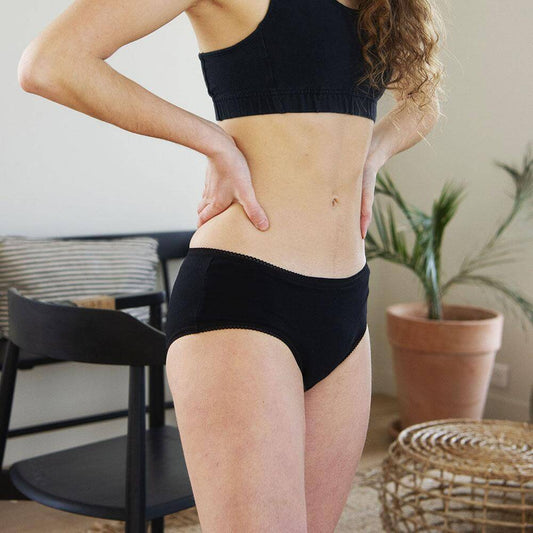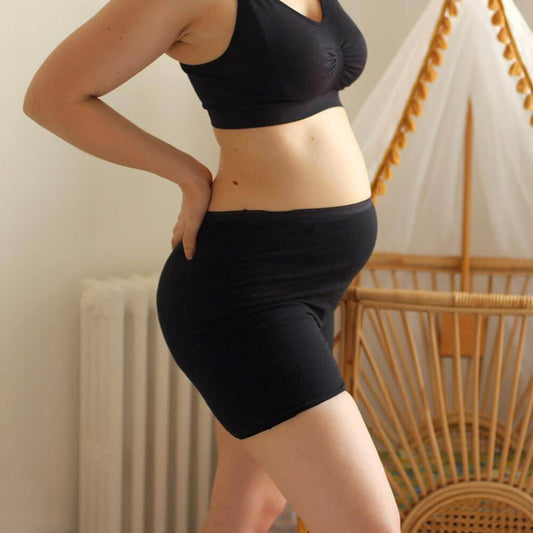Savez-vous que selon une étude IFOP de janvier 2021, 19% des Françaises aimeraient accoucher à domicile, chez elles et 17% songent sérieusement à l'accouchement à domicile. Et vous, vous êtes-vous questionnée sur le lieu de naissance lorsque vous étiez enceinte ou pour un futur bébé ?
L’accouchement à domicile ou à la maison :
Tout d’abord il vous faudra trouver une sage-femme. Si j’annonçais au début de l’article que 36% des femmes envisagent l’AAD (accouchement à domicile), seulement 0.5% le peuvent du fait d’une pénurie de sages-femmes. Il faut donc vous renseigner tôt. De plus en plus de femmes choisissent pour leur suivi gynéco une sage-femme pratiquant l’accouchement à domicile ( l’AAD), Ainsi un lien est déjà créé et si des contres-indications liées à votre état de santé existent vous en serez informée et orientée au mieux pour envisager une alternative ou mettre en place des mesures correctives quand cela est possible.
La sage-femme trouvée, le suivi dépendra de vos aspirations de couple – du plus naturel au plus médical – et de l’évolution de la grossesse. Il débutera par un entretien, idéalement en couple et avant le 3eme trimestre, afin de vous donner toutes les informations dont vous avez besoin pour confirmer votre choix, répondre à toutes vos questions et comprendre votre projet. Le fil rouge d’un accompagnement en vue d’un AAD est de favoriser les conditions d’une naissance physiologique tant sur le plan médical que psycho-émotionnel. Aussi vous alternerez des moments relevant plus de l’ordre du suivi clinique de la grossesse et d’autres permettant de cheminer et de vous préparer à la naissance.
Combien de femmes accouchent vraiment à domicile ?
88% des parturientes débutant le travail à domicile y accoucheront sans problème. Lorsque c’est un deuxième enfant ou plus le risque de transfert est divisé par 5 ! La plupart des femmes transférées le seront sans urgence, rejoignant simplement la maternité où elles s’étaient enregistrées. 1% des transferts nécessitent de se faire en SAMU, la plupart du temps à la suite d’une hémorragie. C’est aussi pour éviter ces cas rares et urgents que votre sage-femme évalue régulièrement votre état de santé et que parfois nous refusons d’accompagner certaines familles.
Et si j’avais accouché à l’hôpital j’aurais eu moins de risque de complication alors ?
Ni plus, ni moins selon les études internationales, voir une diminution du risque de subir des interventions. Pour ne donner que quelques exemples, les 0.3% d’épisiotomie de l’AAD versus les 20.1% de l’hôpital, 1% d’hémorragies sévères de la délivrance vs 1.8%, 2.2% de césarienne vs 20.4% et 1% de réanimation néonatale vs 6.3%, nous permettent d’affirmer la légitimité de cette façon d’enfanter en France.
Cependant, pour les cas rares nécessitant une intervention urgente, le fait de ne pas être à l’hôpital augmente le délai d’accès à des soins avancés. Votre sage-femme pourra évidemment débuter les premiers gestes et stabiliser la situation grâce à ses compétences et son matériel (oxygène, insufflateur respiratoire, médicaments anti-hémorragiques, set de perfusion ou de suture...). Il vous faudra bien mesurer tous les aspects de votre décision et prendre le temps de sentir celle avec laquelle vous vous sentez le plus aligné.
Les avantages de l’accouchement à domicile :
Il n’y a pas de lieu d’accouchement idéal pour toutes les femmes. C’est à chaque femme de trouver là où elle se sent à la fois en sécurité physique et émotionnelle. L’accouchement à la maison accompagné d’une sage-femme, puisque c’est le propos de ce billet, à l’avantage de réunir les deux . En quelque sorte une voie du milieu, entre enfanter seule dans un lieu reclus pour l’intimité et « se faire accoucher » sous le contrôle de machine et médicaments pour la sécurité. Attention ne soyons pas caricatural non plus, les maisons de naissances et certaines équipes de maternité peuvent aussi être ces lieux de compromis. Toutefois ils restent « des endroits où l’on va » et non pas l’espace familier de la mère.
Le jour J est arrivé, comment se passe un accouchement à domicile (AAD) ?
Imaginez-vous, les contractions ont débuté, vous sentez que c’est le grand jour. Vous prévenez votre sage-femme, elle vous donne quelques conseils si vous en avez besoin et se prépare. Vous n’avez plus qu’à vous laisser glisser dans le travail, surfant les contractions sans vous poser aucune question logistique.
Faut-il transformer la maison en succursale de l’hôpital, bâcher et désinfecter les lieux ?
Pas du tout ! À la fin du 8e mois votre sage-femme est passée à la maison et vous a conseillé pour la préparer. Rien de compliqué : protéger les matelas, prévoir des serviettes en quantités, passer à la pharmacie chercher quelques produits. Tout est donc déjà prêt ou presque.
Les aînés peuvent-ils assister à l’accouchement à la maison ?
Là encore zéro stress ! C’est la nuit et ils dorment, laissez-les au lit, ils découvriront bébé au petit-déjeuner pour un merveilleux moment en famille. La journée certains voudront rester et assister à la naissance, d’autres préféreront aller jouer chez les grands-parents, un ami, ou aller à l’école. Parlez-en avec eux avant pour les plus grands, expliquez aux tout-petits avec des livres dédiés à la naissance à domicile. Dans tous les cas prévoyez un plan B pour les faire garder, au cas où il faille se rendre à l’hôpital.
Qui peut assister à l’accouchement à la maison ?
À vous de voir qui vous voulez à votre accouchement. Encore une fois vous êtes chez vous. Gardez juste à l’esprit que quel que soit les personnes présentes, il faudra que vous soyez suffisamment intime avec elle pour oser être nu devant elle, déféquer ou vous montrer vulnérable autant que cro-magnonne. Dis ainsi cela peut paraître cru, mais dans le cas contraire cela pourrait inhiber votre accouchement. Idéalement toutes les personnes se seront déjà rencontrées au moins 1 fois auparavant pour se mettre d’accord sur leurs rôles respectifs et vous accompagner au mieux. N’oubliez pas non plus qu’intimité rime souvent avec petit, voire très petit comité.
Comment se passe le moment de la naissance ?
Reprenons notre visualisation, le travail s’intensifie maintenant, pas besoin de se tracasser pour savoir quand partir, vous appelez votre sage-femme. Elle vous connaît, sait comment vous fonctionnez, elle vous rejoindra quand c’est le bon moment. En l’attendant, vous pouvez prendre un bain, vous reposer dans votre environnement, vous lover dans les bras de votre partenaire ou vous isolez au jardin. Vous êtes chez vous tout est possible, c’est vous qui décidez.
Le travail et le bien-être du bébé sont surveillés de façon non-invasive et quand celui-ci commence à pousser on vous laisse l’accompagner à votre façon. Vous choisissez la position, le rythme, le lieu et accueillez vous-même votre bébé de vos mains. Maintenant il n’y a plus qu’à profiter.
Elle est belle cette vision, mais c’est toujours aussi si simple que ça ?
Comme vous vous en doutez non. Les sages-femmes n’ont pas existé de tout temps et dans les civilisations pour rien. Si dans la plupart des cas, la femme a tous les instincts et ressentis en elle pour y arriver sans aucune intervention, quelquefois, dame nature fait des caprices.
Et pour les suites de couches, toujours pas de médecin ?
Votre sage-femme restera encore 2 à 6h après la naissance pour vous accompagner, prendre soin de vous et s’assurer que tout va bien. À son départ elle vous remettra le carnet de santé de votre bébé, le certificat de naissance, un compte-rendu de l’accouchement et tous les documents utiles. Elle ou une de ses collègues, selon ce que vous avez prévu, viendra le lendemain puis au minimum au troisième jour pour le test de Guthrie et au 5eme et/ou 10eme jour. L’examen médical du 8eme jour se fait avec un médecin et donne lieu à l’établissement d’un certificat. Ça peut être votre généraliste qui vient chez vous ou un pédiatre que vous consultez à son cabinet ou à la maternité.
Sans coupure ni changement d’environnement, le bébé s’adapte facilement à sa nouvelle vie et l’allaitement est souvent facilité. Le lien avec le co-parent et la fratrie est aussi plus propice.
Pourquoi s'interroge-t-on sur le meilleur lieu de naissance pour nous ?
L'accouchement est un processus intime et instinctif contrôlé par notre cerveau reptilien - celui des instincts. De ce fait nous pourrions conclure que les femmes devraient enfanter dans un lieu connu, avec peu de personnes, afin de pouvoir se laisser aller à leur instinct de « femme sauvage ». On sait que le cerveau reptilien se trouve inhibé par le néocortex, lui-même stimulé par tout ce qui donne à réfléchir (quand partir, répondre aux questions d’admission à l’hôpital, entendre des bruits de machines...). Bref conclure que l’hôpital choisi par la majorité des femmes n’est pas vraiment adapté pour vivre une naissance.
Pour autant, contrairement à la lionne ou la gazelle, nous sommes des femelles mammifères éminemment culturelles. De ce fait, nous sommes imprégnées des croyances liées à notre société et à notre époque. Aussi pour certaines femmes, le lieu où elles pourraient le plus sûrement lâcher prise, est celui où elles disposent de tout un attirail de technologie et de pléthore d’examens. Par ces interventions elles pourraient arrêter de réfléchir et s’inquiéter et se laisser aller aux contractions et dans l’ouverture, se sentant en sécurité et « prise en charge ».
Aussi il n’y a pas un lieu d’accouchement idéal pour toutes les femmes. C’est à chaque femme de trouver là où elle se sent à la fois en sécurité physique et émotionnelle.
Alors pour finir, ce serait quoi votre choix ?
Pour en savoir plus vous pouvez vous rapprocher de l’APAAD ou du CDAAD notamment. N’oubliez jamais, il n’y a pas de bonne ou mauvaise façon d’accoucher. Il y a ce qu’on peut en fonction de notre parcours de vie tant médical qu’émotionnel, de comment va se dérouler la grossesse puis l’accouchement. Mais une chose est sure si vous vous êtes donné les moyens de vivre ce que vous espérez et que vous êtes resté acteur, quoiqu’il se passe vous serez en paix avec vos décisions. Donc AAD ou pas, choisir où et comment on veut enfanter est une question essentielle.
Pour vous accompagner de votre grossesse au retour de couches, nos culottes dédiées à la grossesse et le post-partum sont idéales !
Article écrit par Floriane Stauffer-Obrecht, Sage-femme libérale accompagnant les AAD, co-dirigeante de l’APAAD










